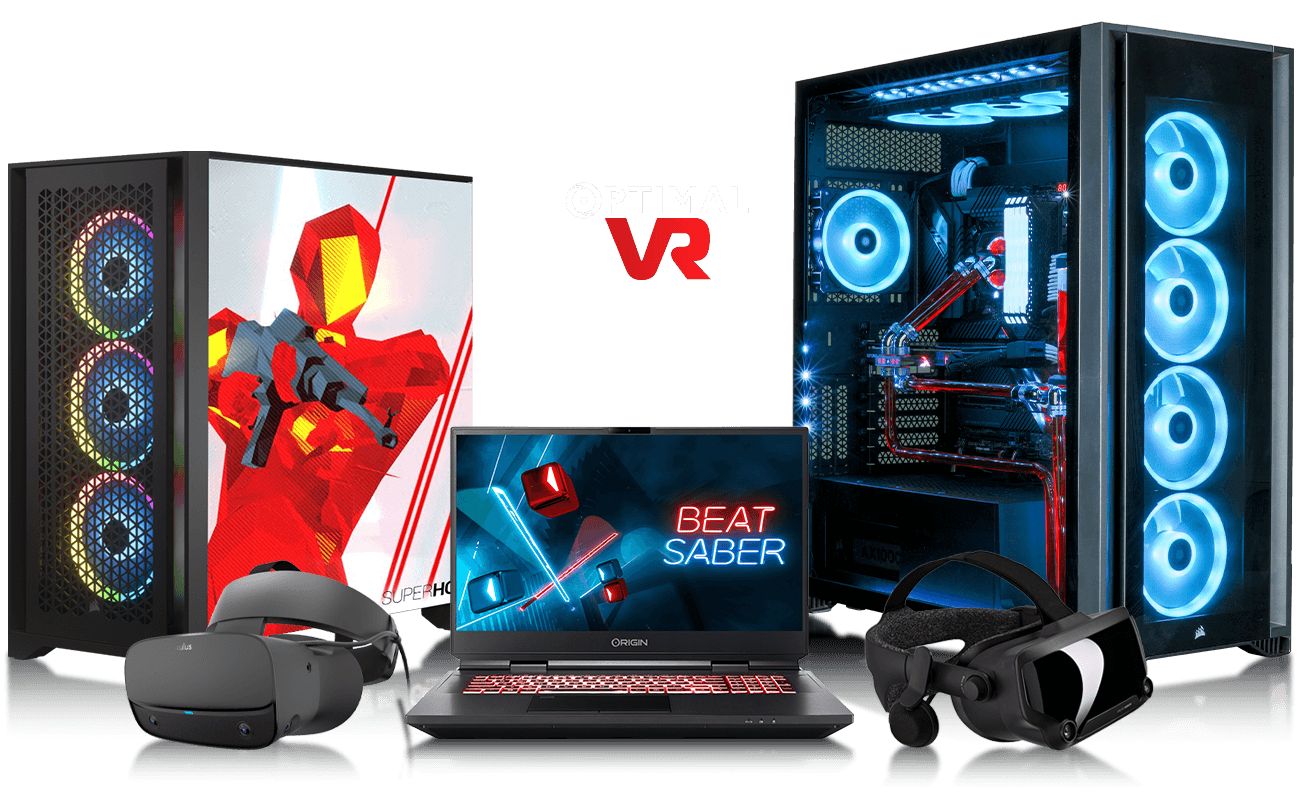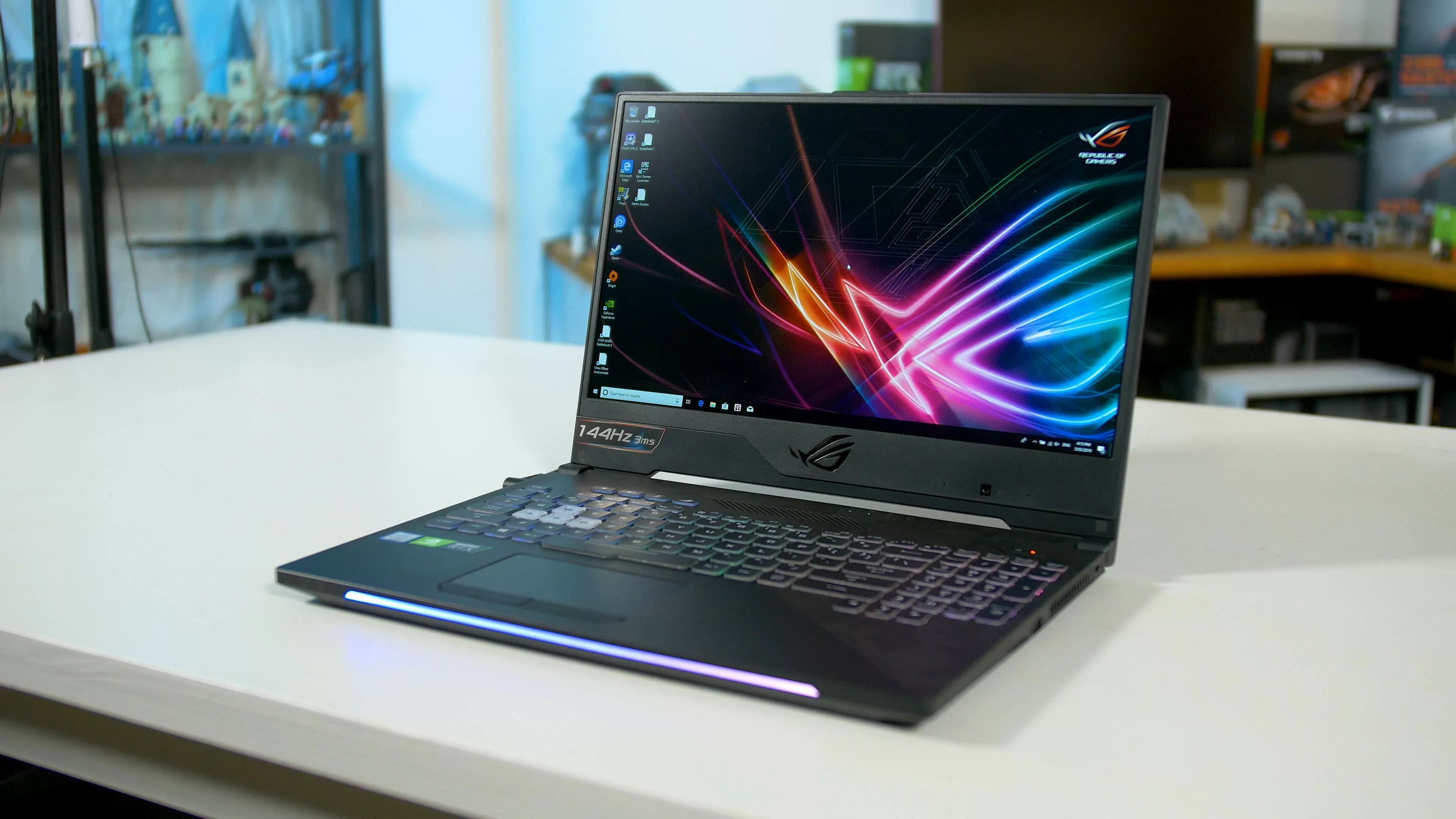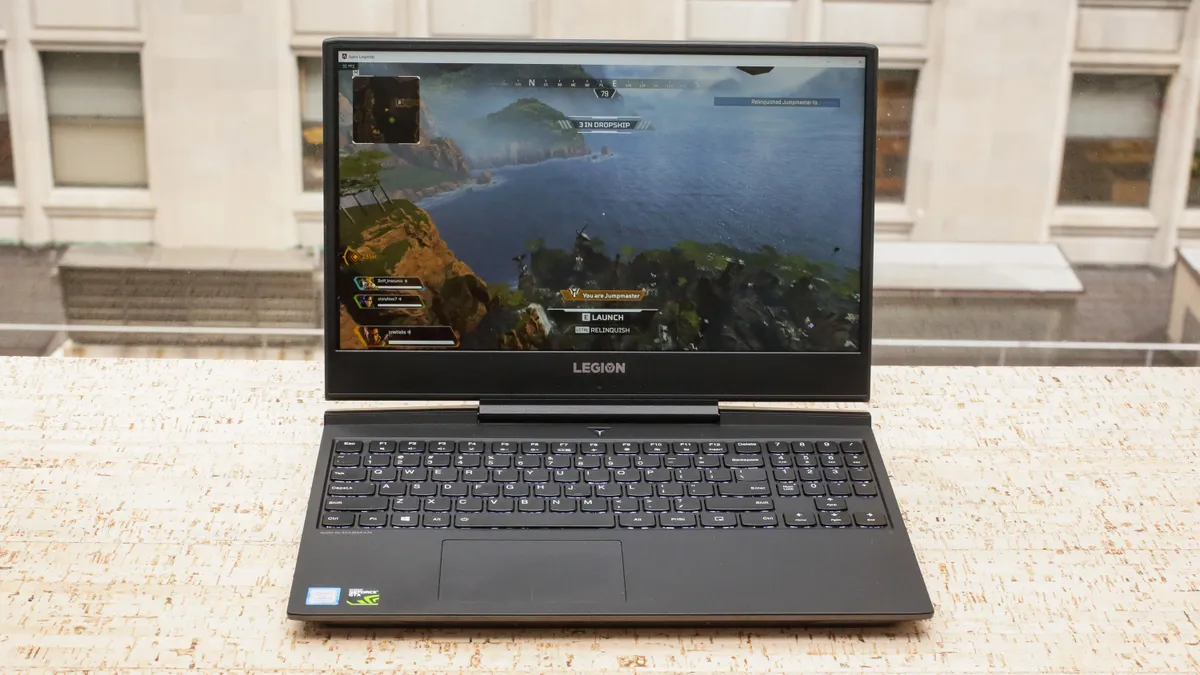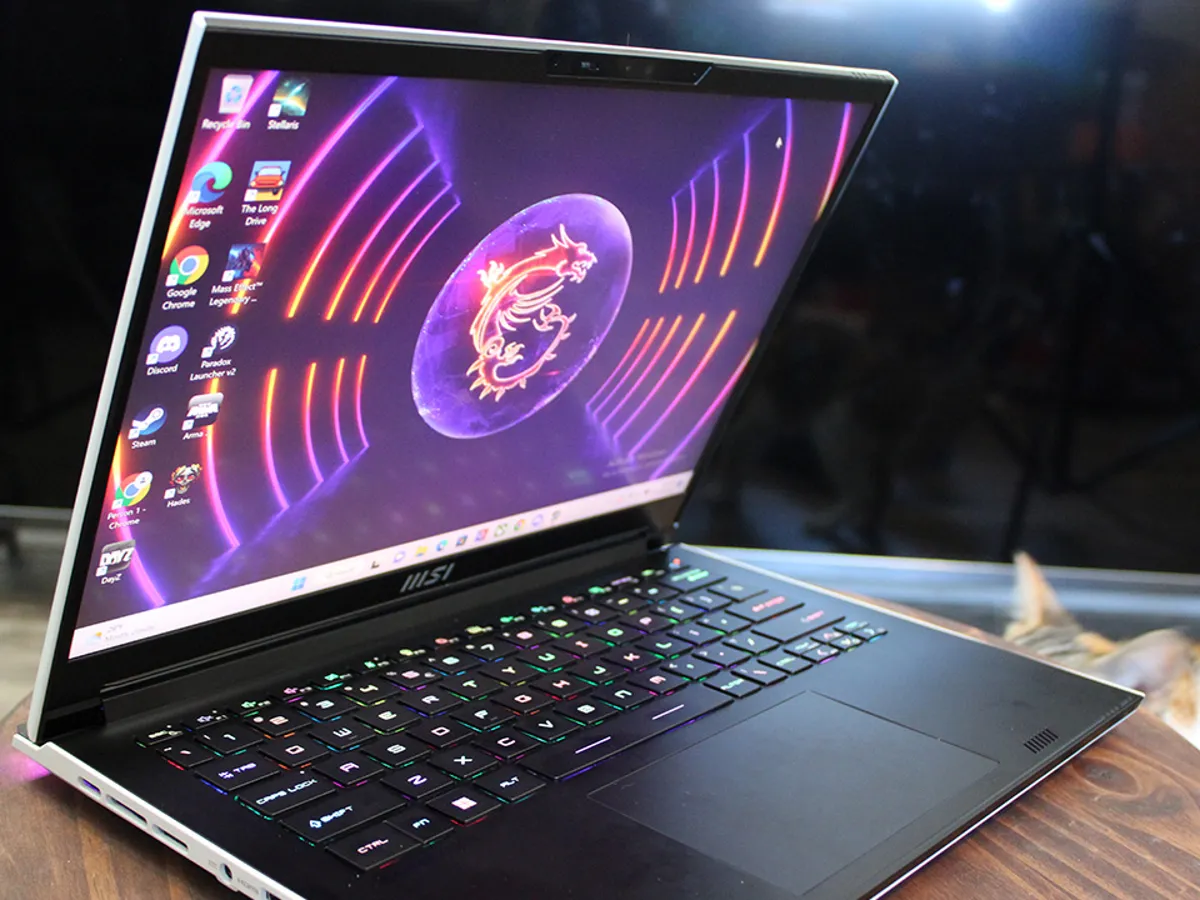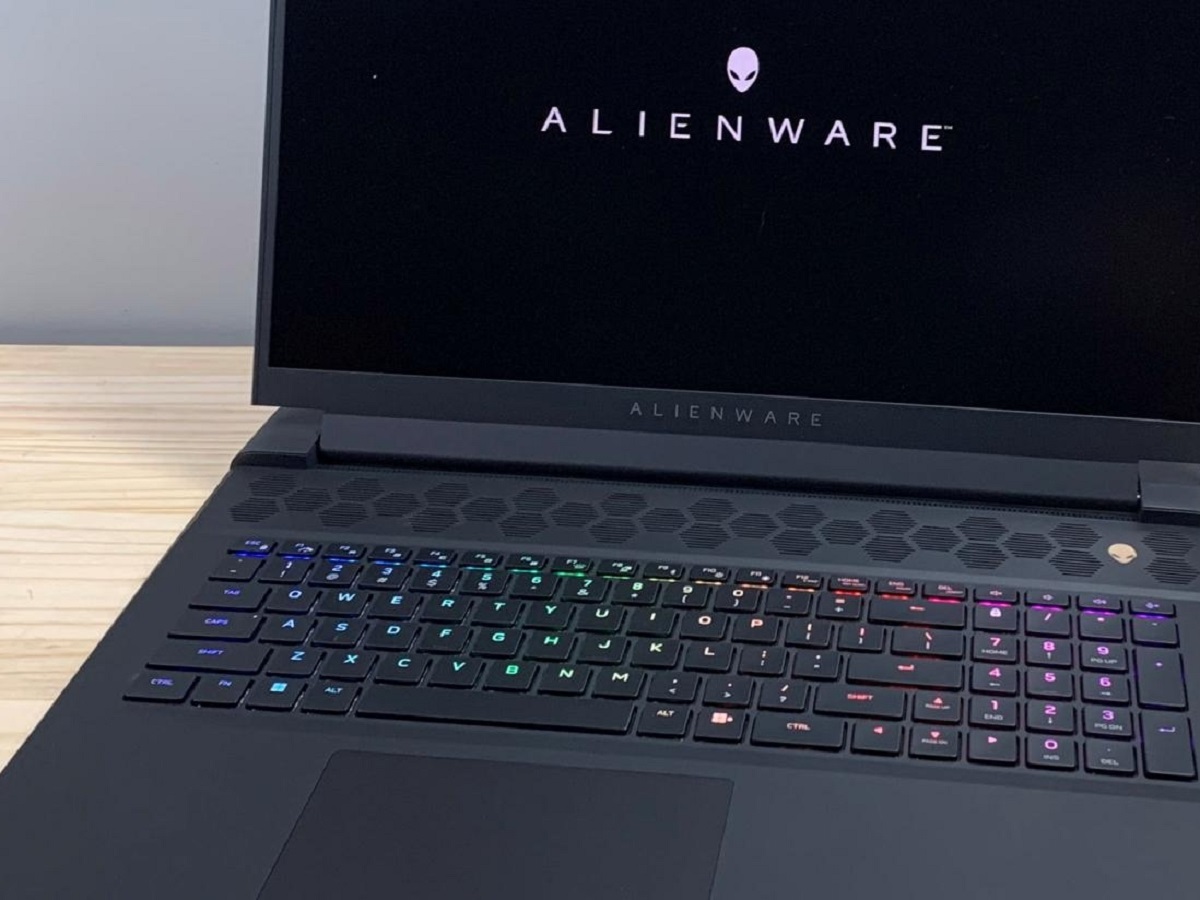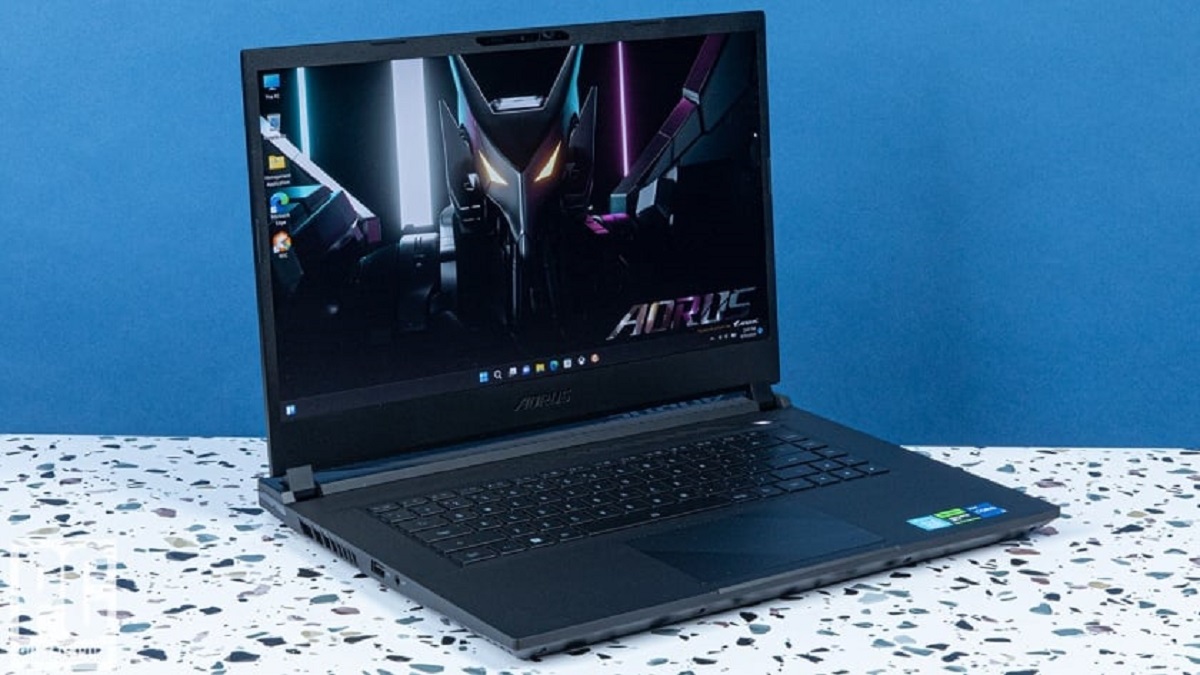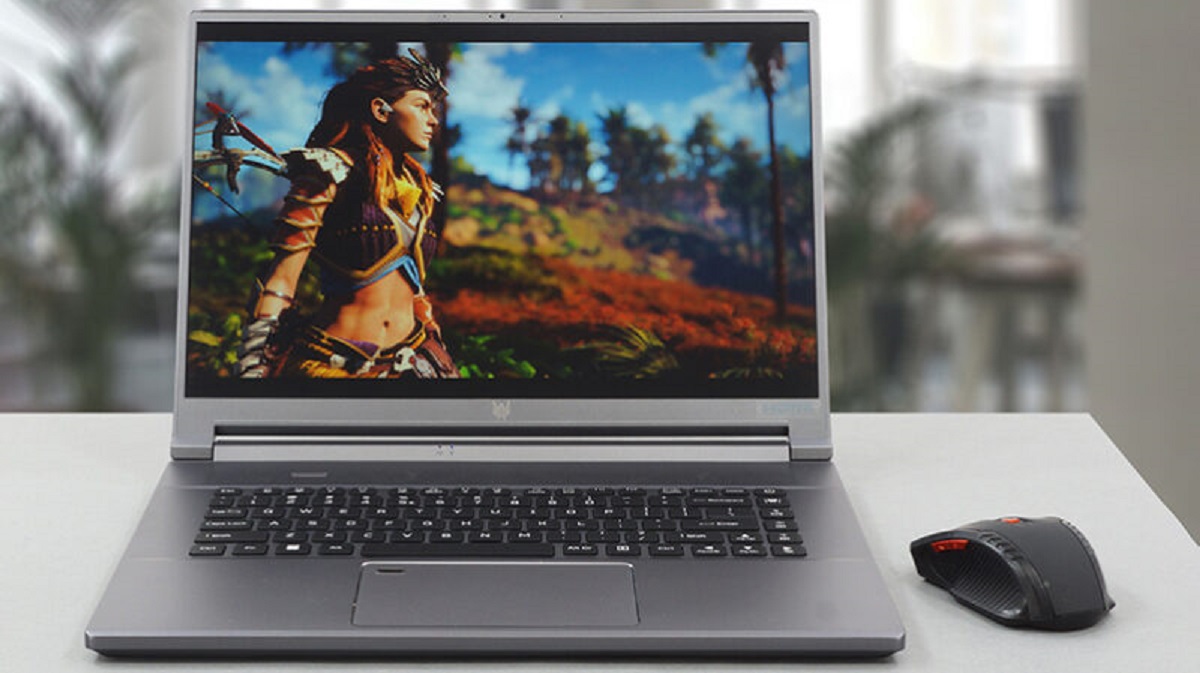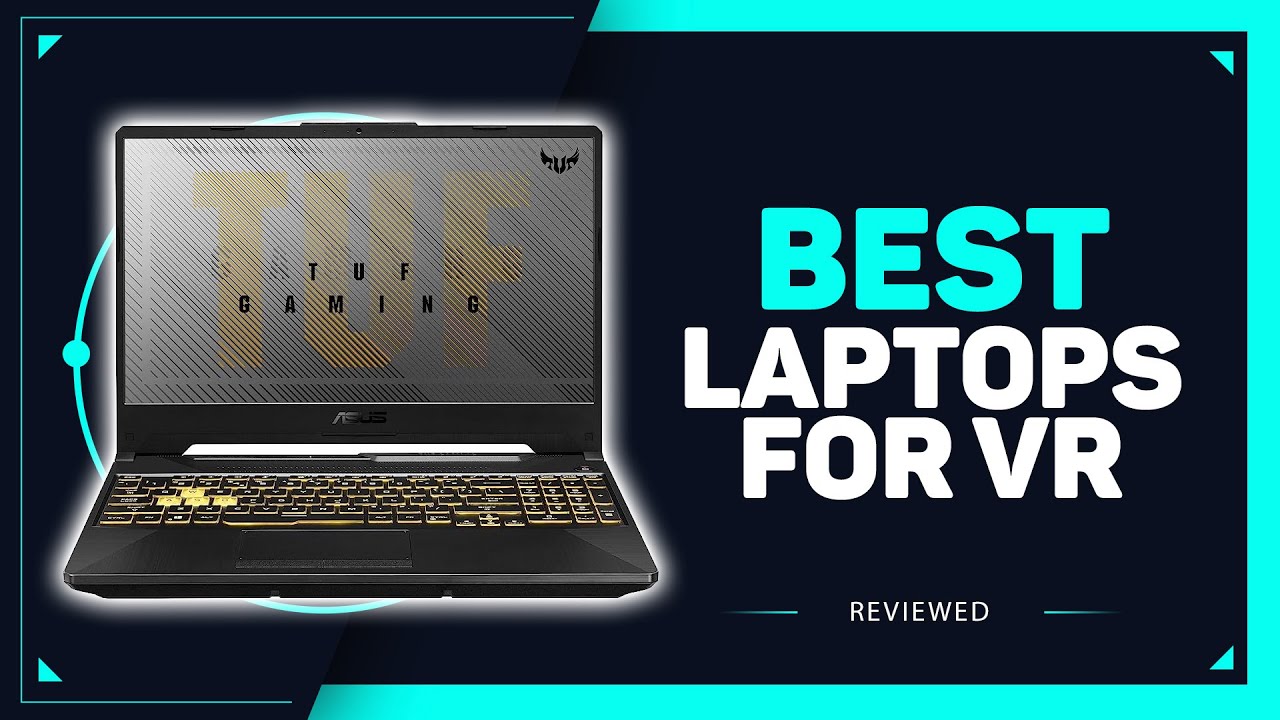Introduction
Virtual Reality (VR) gaming has revolutionized the way we experience video games. It allows players to immerse themselves in a virtual world, making the gameplay more realistic and engaging. To fully enjoy the wonders of VR gaming, you’ll need a powerful gaming laptop that can handle the demanding technical requirements of these immersive experiences.
When it comes to choosing a VR gaming laptop, there are certain specifications and features you need to consider. This article will guide you through the essential specs that a VR gaming laptop should have to deliver an exceptional gaming experience.
From the processor to the graphics card, and from the RAM to the storage, every component plays a crucial role in maintaining a smooth VR gaming experience. Additionally, factors like display quality, battery life, cooling mechanisms, connectivity options, and VR-Ready certification should also be taken into account when choosing the right gaming laptop.
Whether you’re a hardcore gamer or a casual player looking to dip your toes into the world of virtual reality, understanding the requirements and features of a VR gaming laptop is essential for a seamless and enjoyable gaming experience. Let’s dive into the specific specifications that you should look for in a VR gaming laptop to ensure unmatched performance and immersion.
Processor
The processor, often referred to as the CPU (Central Processing Unit), is the brain of the laptop. It is responsible for carrying out all the computational tasks, including rendering graphics and running complex algorithms required by VR gaming.
When it comes to VR gaming, you’ll need a laptop with a fast and powerful processor. Look for a laptop that has at least an Intel Core i5 or AMD Ryzen 5 processor. These processors offer a good balance between performance and affordability. However, if you want a more high-end experience, consider opting for an Intel Core i7 or AMD Ryzen 7 processor, which will provide even faster processing speeds and better multitasking capabilities.
Another important aspect to consider is the generation of the processor. The latest generation processors, such as the Intel 10th or 11th generation, or the AMD Ryzen 5000 series, offer significant improvements in performance and power efficiency compared to their predecessors.
It’s also worth mentioning that some VR games may have specific processor requirements. Therefore, it’s advisable to check the system requirements of the VR games you intend to play and ensure that your laptop’s processor meets or exceeds those specifications.
Overall, a powerful and up-to-date processor is a crucial component for a smooth and lag-free VR gaming experience. It ensures that the laptop can handle the demanding tasks of rendering high-resolution graphics and processing complex algorithms in real-time, allowing you to fully immerse yourself in the virtual world of the game.
Graphics Card
The graphics card, also known as the GPU (Graphical Processing Unit), is arguably the most important component when it comes to VR gaming. It is responsible for rendering the graphics and visuals of the game, ensuring smooth animations, realistic textures, and lifelike environments.
To have an optimal VR gaming experience, you’ll need a laptop with a powerful graphics card. Look for laptops that are equipped with dedicated graphics cards from reputable brands such as NVIDIA or AMD. Ideally, you should aim for a laptop with at least an NVIDIA GeForce GTX 1660 Ti or an AMD Radeon RX 5600M. These mid-range graphics cards offer excellent performance at a reasonable price point.
For those seeking even higher performance, consider laptops with higher-end graphics cards like the NVIDIA GeForce RTX 2060, RTX 2070, or RTX 2080. These top-tier GPUs provide superior graphics capabilities, allowing you to enjoy VR games at maximum settings and with higher frame rates.
It’s also worth noting that VR gaming requires a graphics card with VR-Ready certification. This certification ensures that the laptop is capable of delivering a smooth and immersive VR experience without any visual artifacts or lag. Look for laptops that have VR-Ready certification, indicated by a badge or logo from VR headset manufacturers like HTC Vive or Oculus.
Lastly, pay attention to the VRAM (Video Random Access Memory) of the graphics card. VR games tend to be more demanding in terms of memory requirements. Aim for a laptop with at least 6GB of VRAM, although 8GB or higher would be ideal for future-proofing and ensuring smooth performance.
In summary, a powerful and VR-Ready graphics card is essential for an immersive and visually stunning VR gaming experience. It ensures that the laptop can handle the demanding graphics processing tasks and delivers smooth and lifelike visuals, bringing the virtual world to life right before your eyes.
RAM
RAM (Random Access Memory) plays a crucial role in the overall performance of a VR gaming laptop. It acts as a temporary storage space for the data and instructions that the processor needs to access quickly. When it comes to VR gaming, having an adequate amount of RAM is important for smooth multitasking and seamless gameplay.
For VR gaming, it is recommended to have a minimum of 8GB of RAM. This will ensure that the laptop can handle the VR game and any background processes without experiencing lag or slowdowns. However, if you plan to run more demanding applications or multiple virtual machines alongside your VR gaming sessions, consider opting for 16GB or even 32GB of RAM.
Additionally, the speed of the RAM, measured in megahertz (MHz), can also impact the performance of the laptop. Higher MHz RAM modules offer faster data transfer rates, resulting in smoother multitasking and better overall system performance. Look for DDR4 RAM with speeds of at least 2666MHz or higher for a good VR gaming experience.
It’s worth mentioning that some VR games may have specific RAM requirements. Therefore, it’s advisable to check the system requirements of the VR games you intend to play and ensure that your laptop’s RAM meets or exceeds those specifications.
In summary, having an adequate amount of RAM is essential for a smooth and immersive VR gaming experience. It allows the laptop to efficiently handle the demands of the VR game and any background tasks, ensuring seamless gameplay and preventing any performance bottlenecks.
Storage
The storage capacity of a VR gaming laptop is an important consideration, as VR games and applications can take up a significant amount of space. Having sufficient storage ensures that you can install and store your VR games, as well as other files and applications, without constantly running out of space.
When it comes to storage, there are two main types to consider: Hard Disk Drives (HDDs) and Solid State Drives (SSDs).
HDDs offer a larger storage capacity at a more affordable price point. However, they are generally slower in terms of data transfer speeds. SSDs, on the other hand, are much faster, offering quicker boot times and faster loading of games and applications. While they tend to have smaller storage capacities, they are well-suited for delivering a smooth and responsive gaming experience, which is crucial for VR gaming.
For a VR gaming laptop, it is recommended to choose an SSD as the primary storage option. Look for laptops with at least 256GB or 512GB of SSD storage. This will provide enough space to install multiple VR games and ensure faster loading times.
However, if you need additional storage space for multimedia files, documents, and other applications, you can consider getting a laptop with a secondary HDD or an external storage solution. This will allow you to have the best of both worlds – fast SSD storage for your VR games and larger HDD or external storage for other files.
It’s important to note that some laptops offer hybrid storage options, combining both an SSD and an HDD. This setup provides the benefits of both fast storage and larger capacity, making it an attractive choice for users who require ample storage space for their VR games and other files.
In summary, having sufficient storage capacity, preferably in the form of an SSD, is crucial for a smooth VR gaming experience. It ensures fast loading times, quick access to game data, and overall better performance, allowing you to fully enjoy your virtual reality adventures without any storage-related limitations.
Display
The display of a VR gaming laptop is a key component in delivering an immersive and visually stunning gaming experience. It is important to consider factors such as display resolution, refresh rate, and panel technology when choosing a laptop for VR gaming.
Firstly, the display resolution plays a significant role in the level of detail and clarity you’ll experience in VR games. Look for laptops with at least a Full HD (1920×1080) resolution or higher. Higher resolutions, such as QHD (2560×1440) or even 4K (3840×2160), will provide sharper visuals, making the virtual world come to life with greater detail.
Secondly, the refresh rate of the display is crucial for a smooth and comfortable VR gaming experience. Look for laptops with a high refresh rate, preferably 120Hz or higher. A higher refresh rate ensures smoother and more fluid motions in VR games, reducing motion sickness and enhancing overall immersion.
Additionally, the panel technology used in the display can also impact the visual quality. IPS (In-Plane Switching) or OLED (Organic Light-Emitting Diode) panels are known for their vibrant colors and wide viewing angles, making them ideal for an immersive gaming experience. These panels offer better color accuracy, contrast, and overall image quality compared to TN (Twisted Nematic) panels.
Another aspect to consider is the display size. A larger display provides a more immersive experience, but keep in mind that it may also make the laptop bulkier and less portable. Consider your preferences and whether you prioritize mobility or a larger viewing area.
Lastly, it’s worth mentioning that some VR headsets come with specific display requirements. Ensure that your laptop’s display is compatible with the VR headset you plan to use to avoid any compatibility issues.
In summary, a high-resolution display with a high refresh rate and quality panel technology is essential for a visually stunning and immersive VR gaming experience. It allows you to fully dive into the virtual world, experiencing every detail and motion with clarity and smoothness.
Battery Life
The battery life of a VR gaming laptop is an important factor to consider, especially if you plan on gaming without being plugged into a power source. VR gaming can be resource-intensive, putting a strain on the laptop’s battery. Therefore, having a laptop with a sufficient battery life is essential for uninterrupted gaming sessions.
The battery life of a laptop can vary depending on several factors, including the laptop’s power consumption, the intensity of the VR games being played, and the tasks being performed simultaneously. Generally, laptops with larger batteries and more power-efficient components tend to offer longer battery life.
When choosing a VR gaming laptop, look for one that provides at least 4 to 6 hours of battery life under normal usage conditions. This will allow you to enjoy extended gaming sessions or use the laptop for other tasks without constantly worrying about running out of power.
It’s important to note that VR gaming can drain the battery faster compared to regular gaming or other tasks. To maximize the battery life, consider adjusting the laptop’s power settings, reducing the display brightness, and closing any unnecessary applications running in the background. Additionally, using a cooling pad or ensuring proper ventilation can help prevent overheating, which can also impact battery life.
If you plan to game on the go or for extended periods without access to a power source, you may want to consider investing in a laptop with a removable or swappable battery. This allows you to carry additional batteries and swap them out when needed, extending your gaming sessions without interruption.
In summary, ensuring a sufficient battery life is crucial for uninterrupted VR gaming sessions. Look for laptops with longer battery life, consider adjusting power settings, and explore options with removable or swappable batteries if gaming on the go is a priority.
Cooling
Proper cooling is essential for a VR gaming laptop to ensure optimal performance and prevent overheating. VR gaming can put a significant strain on the laptop’s components, generating a substantial amount of heat. If not properly managed, this heat can lead to thermal throttling, performance degradation, and potential long-term damage to the hardware.
When choosing a VR gaming laptop, look for models that have effective cooling systems in place. A good cooling system typically consists of multiple heat pipes, heat sinks, and fans strategically placed to dissipate heat efficiently.
Many gaming laptops offer advanced cooling technologies, such as vapor chamber cooling or liquid metal thermal compounds, to enhance heat dissipation and improve overall cooling performance. These technologies help to maintain lower temperatures, allowing the laptop’s components to perform optimally even during intense VR gaming sessions.
Adequate airflow is also crucial for effective cooling. Look for laptops that have well-designed vents and air intakes to ensure proper circulation of cool air. Additionally, consider using a cooling pad or a laptop cooling stand to further enhance airflow and dissipate heat.
Regular maintenance, such as keeping the laptop’s cooling vents free from dust and debris, is important for optimal cooling. Over time, dust can accumulate and obstruct the airflow, leading to poor cooling performance. Cleaning the vents with compressed air periodically can help prevent heat buildup and prolong the lifespan of the laptop.
Lastly, it is worth mentioning that intensive VR gaming sessions can generate high fan noise. While it is normal for the fans to spin faster and produce more noise during gaming, some laptops offer fan control software that allows you to adjust the fan speed and noise level to your preference.
In summary, a well-designed cooling system is essential for a VR gaming laptop to maintain optimal performance and prevent overheating. Look for laptops with effective cooling technologies, good airflow management, and consider regular maintenance to ensure a smooth and enjoyable VR gaming experience.
Connectivity
Connectivity is an important aspect to consider when choosing a VR gaming laptop. It determines how well the laptop can connect to other devices, networks, and accessories, enhancing the overall gaming experience. Here are some key connectivity features to look for:
- USB Ports: Ensure that the laptop has an adequate number of USB ports, preferably USB 3.0 or higher. These ports are essential for connecting VR headsets, external sensors, and additional peripherals like gaming controllers.
- Display Outputs: Look for laptops that have display outputs compatible with your VR headset. Most VR headsets use HDMI or DisplayPort connections, so verify that the laptop has the corresponding ports.
- Wireless Connectivity: A stable and fast wireless connection is important for online gaming and VR content streaming. Look for laptops with built-in Wi-Fi 6 or Wi-Fi 5 (802.11ac) for improved wireless performance. Additionally, Bluetooth connectivity is useful for connecting wireless peripherals like VR motion controllers and headphones.
- Ethernet Port: Although wireless connectivity is convenient, having an Ethernet port can provide a more stable and reliable internet connection, especially for online multiplayer VR gaming.
- Audio Jacks: Ensure that the laptop has audio jacks for headphones or external speakers. VR gaming often relies on immersive sound effects, so having the ability to connect high-quality audio devices can enhance the gaming experience.
- Thunderbolt 3: If you plan on using external graphics enclosures or other high-performance peripherals, a laptop with Thunderbolt 3 connectivity can provide greater flexibility and faster data transfer speeds.
Additionally, it is worth mentioning that VR headsets may have specific connectivity requirements. Ensure that your laptop meets the connectivity specifications outlined by the VR headset manufacturer to avoid any compatibility issues.
Overall, having a variety of connectivity options ensures that your VR gaming laptop can easily connect to the necessary devices and accessories, providing a seamless and immersive gaming experience.
VR-Ready Certification
VR-Ready certification is an important consideration when choosing a laptop for VR gaming. It ensures that the laptop meets the necessary hardware and performance requirements to deliver a smooth and immersive VR gaming experience.
VR-Ready certification is typically provided by VR headset manufacturers, such as HTC Vive or Oculus. It means that the laptop has been extensively tested and proven to meet the specific performance standards set by the VR headset manufacturer.
VR-Ready certification takes into account various specifications, including the processor, graphics card, RAM, and more. It ensures that the laptop can meet the demanding processing and performance requirements of VR games and applications without any compromises.
When choosing a VR gaming laptop, look for models that have VR-Ready certification, indicated by a badge or logo from the VR headset manufacturer. This certification provides peace of mind, knowing that the laptop has been tested and approved for VR gaming.
However, it is important to note that VR-Ready certification is not the only factor to consider. While it guarantees that the laptop meets the minimum requirements for VR gaming, it does not guarantee the best performance or compatibility with all VR headsets or games. Therefore, it’s still essential to consider other specifications and features mentioned earlier in this article.
By choosing a laptop with VR-Ready certification, you can have confidence in its ability to deliver a seamless and immersive VR gaming experience. It ensures that the laptop is equipped with the necessary hardware to handle the demanding requirements of VR games, allowing you to fully immerse yourself in the virtual world.
Conclusion
Choosing the right VR gaming laptop is crucial to ensure a smooth, immersive, and visually stunning gaming experience. Throughout this article, we have explored the key specifications and features to consider when selecting a VR gaming laptop.
From the processor and graphics card to the RAM, storage, display, battery life, cooling, connectivity, and VR-Ready certification, each component plays a vital role in delivering optimal performance and enjoyment of VR gaming.
A powerful processor and dedicated graphics card are essential for handling the demanding tasks of VR gaming, while sufficient RAM ensures smooth multitasking and seamless gameplay. Adequate storage, preferably in the form of an SSD, allows for fast loading times and ample space for VR games. The display with a high resolution and refresh rate delivers a visually stunning and immersive gaming experience.
Battery life and effective cooling are important considerations to prevent interruptions and maintain optimal performance during intense VR gaming sessions. Connectivity options like USB ports, display outputs, and wireless capabilities enhance the ability to connect to VR headsets and other peripherals.
Finally, considering laptops with VR-Ready certification provides assurance that the laptop meets the necessary requirements to handle VR gaming effectively.
When searching for a VR gaming laptop, remember to strike a balance between performance, budget, and personal preferences. Consider the specific requirements of the VR games you plan to play, and ensure compatibility with the VR headset of your choice.
By carefully considering the specifications and features outlined in this article, you can confidently choose a VR gaming laptop that will deliver exceptional performance, stunning visuals, and an immersive gaming experience that will leave you captivated for hours on end.







